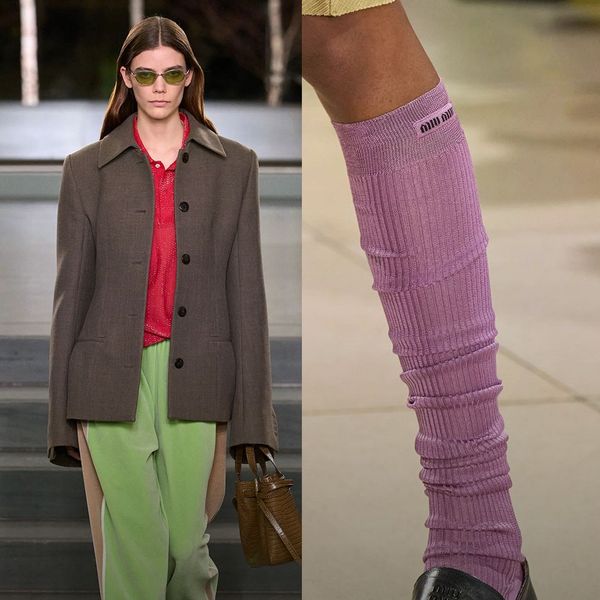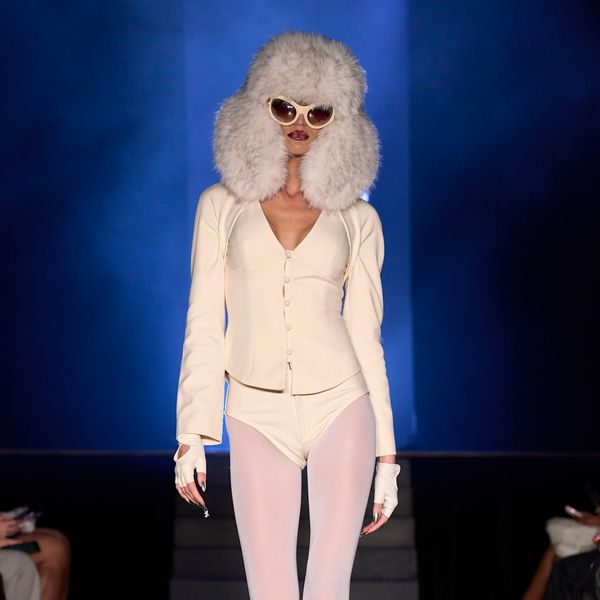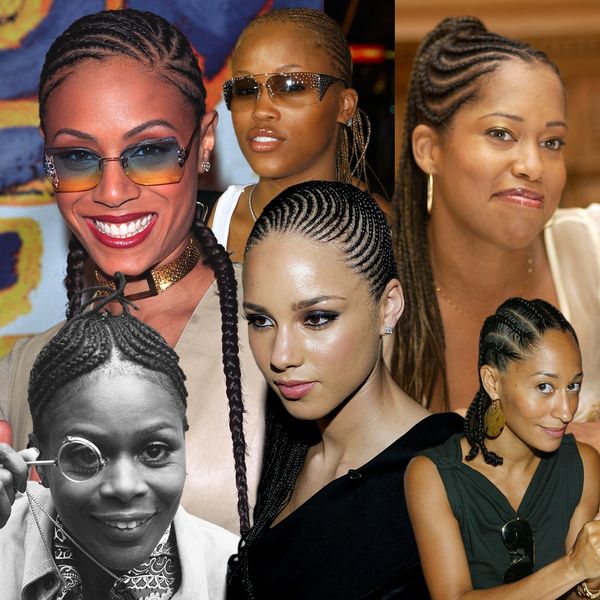Inside Bach Mai's New York Studio
Apparently, the CFDA Emerging Designer of the Year nominee has a thing for ballet, John Galliano, and K-Pop.

“What I wouldn't do to see Sylvie Guillem dance,” Bach Mai muses of his favorite ballerina. “I remember watching her in a variation of Cinderella,” he says of his forays into Youtube performances. “Her feet were emoting, her feet.” On the way to his garment district studio, I passed American Ballet Theatre soloist Katie Williams carrying a garment bag that nearly eclipsed her own tiny stature. (Mai dressed her for the following night’s ABT gala.) Half an hour later, it becomes clear that in asking about ballet, I’ve picked a thread that continues to unravel.
The creative’s obsession is not altogether a surprising one, especially considering his line of work. The nominee for this year's CFDA Emerging Designer of the Year makes formalwear that embodies ballet’s reverence for beauty—often on a rather grand scale. “My first ever experience actually was an intern at the costume shop at the Houston Ballet,” he says of his high school training. The Lincoln Center regular has naturally constructed his own mental Venn Diagram between fashion and ballet many times. “When you're dancing, there’s this constant strive for perfection, this perfect line, this perfect moment—this perfection that doesn't exist,” he says. “And I think it's the same with couture.”

"I'm also in love with this new K-pop girl group NewJeans. So I'm looking at their visuals, but then connecting that to the wives of Henry VIII, because why not?"
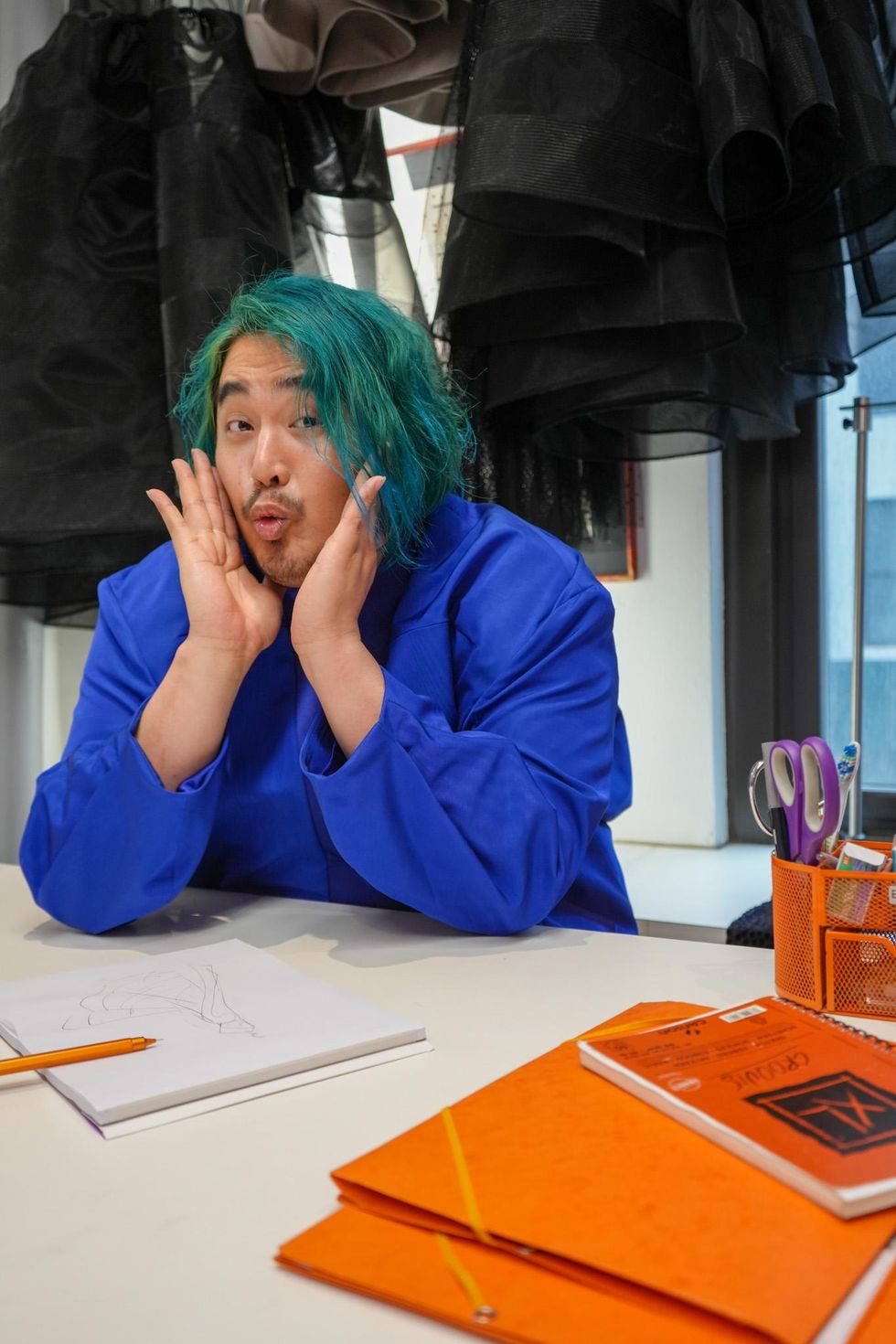
"I wear pretty much the same thing every single day."
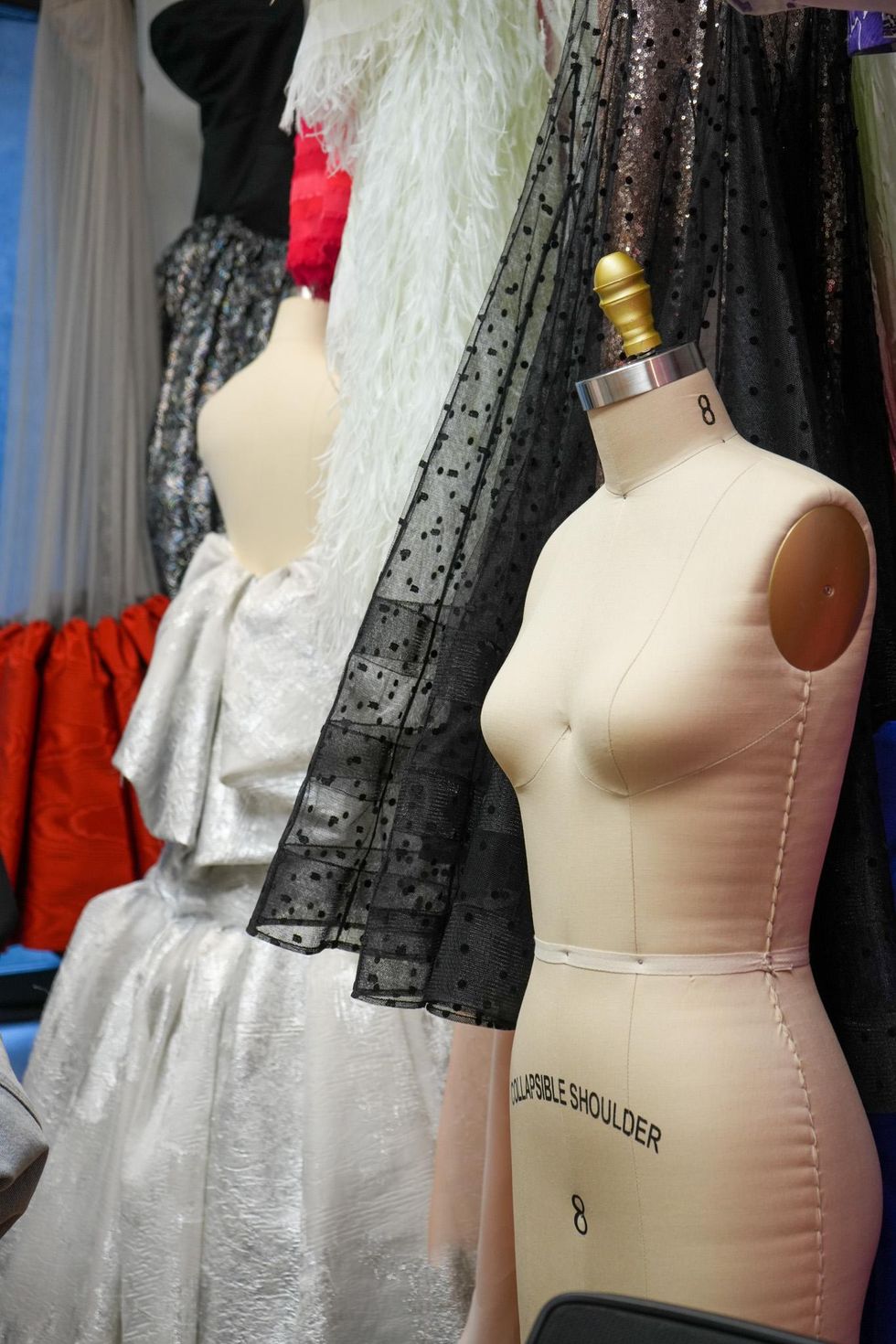
Mai's designs are unafraid to take up space.
Mai credits John Galliano's Spring 2004 haute couture show for Christian Dior not with his love of fashion—that, he says, was innate—but with his love of couture. The Houston native refers to his current collection of sculptural, voluminous eveningwear as “couture aspirational.” (Haute Couture is not a term one applies to oneself; it requires the meeting of standards by the Federacion de la Haute Couture in Paris). “I would never dare to say that what I'm doing here is haute couture, but I hope to be doing couture one day.” Mai can say this because he’s seen the inner workings of a couture atelier—that of his idol (in craft not actions) John Galliano.
Mai trained under Galliano at Maison Margiela in Paris, an era evident in the bias cutting and architectural quality of the protégé’s work. Prior to that, he obtained degrees from L'Institut Français de la Mode in Paris and Parsons in New York (the latter in both fashion and dance). Mai’s resume also includes stints at Oscar de la Renta, Prabal Gurung, and, briefly, Calvin Klein. All of which culminated in his position as Galliano’s first assistant. It was then Mai decided he was ready to break off on his own.
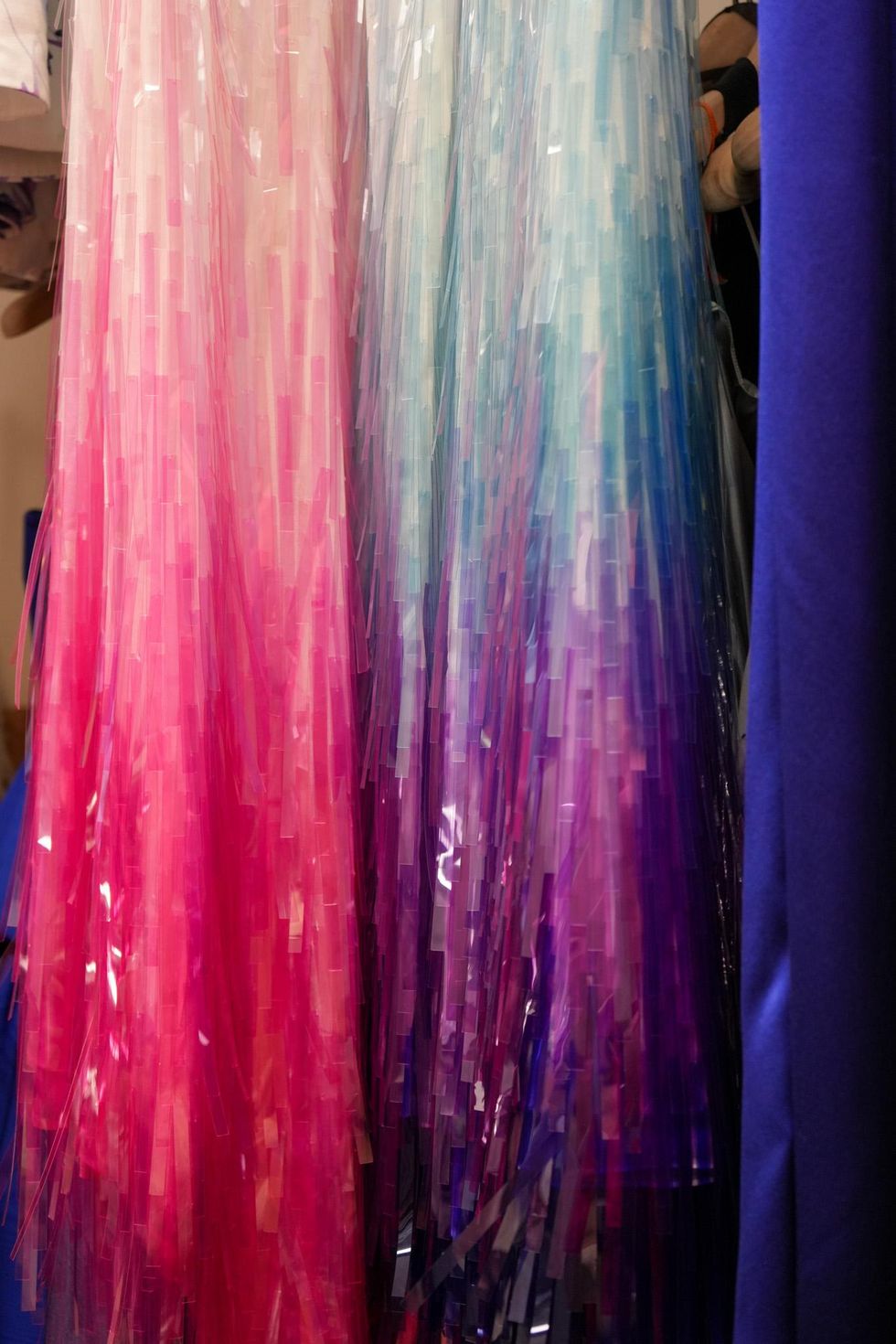
Gowns from Mai's Resort '23 collection.

Mai's references range from the painter Cy Twombly to fashion legend Charles James.

"I don't do mood boards, but I do research boards. Lots of research boards. They are broken down into categories and it's very specific."
The burgeoning creative returned to New York in 2019 to conceptualize his own brand. He launched his eponymous label, Bach Mai, a little over a year ago. In addition to figure-defining bias work, the Houston native also challenges the human figure with garments equivalent to feats of engineering (his father was an engineer). The designers cultivated obsessions are also evident in the dresses. An infatuation with ‘50s couture icons Charles James and Cristobal Balenciaga, a reverence for the imagery of Avedon and Irving Penn, even a fondness for the salacious history of courtesans radiate from the ostentatious silhouettes.
This Spring ‘23 season, Mai lensed his glamour through the idea of Texas oil refineries. (He grew up in front of a huge oil plant where his father worked). That idea manifested as fabric reminiscent of an oil spill, heavy cotton twill that pertains to the steel and sand, even a royal blue suit inspired by his father’s coveralls. Fusing all of these influences into his garments, Mai abolishes the polarity between femininity and strength. It’s “irreverent glamor, unabashed femininity.” And it’s not afraid to take up space. “I remember reading this amazing article about examining 18th century dress,” recounts Mai. “The higher up in rank you were, the bigger the dress got because you were imposing on other people's space.”
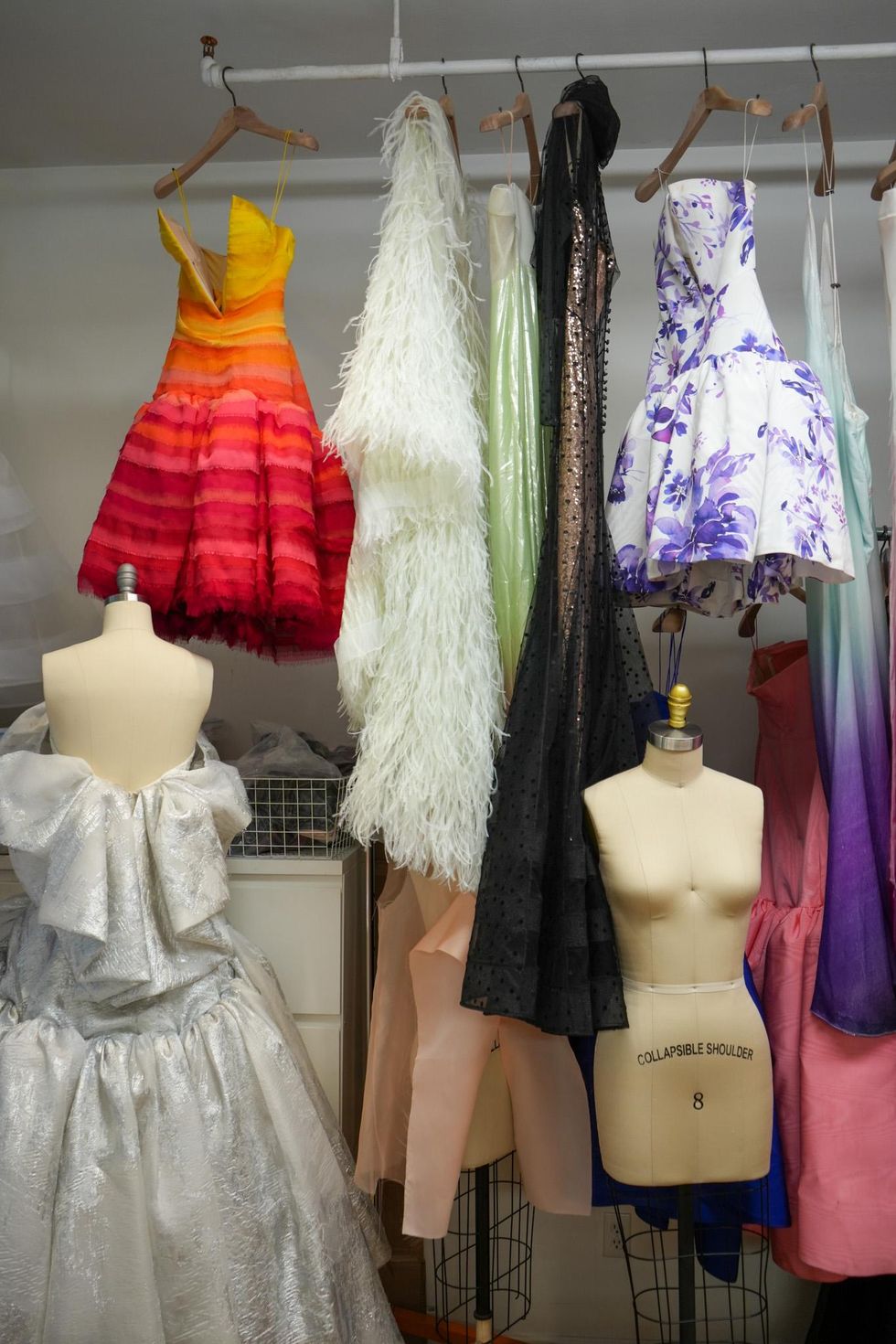
Mai's designs surround his workspace.
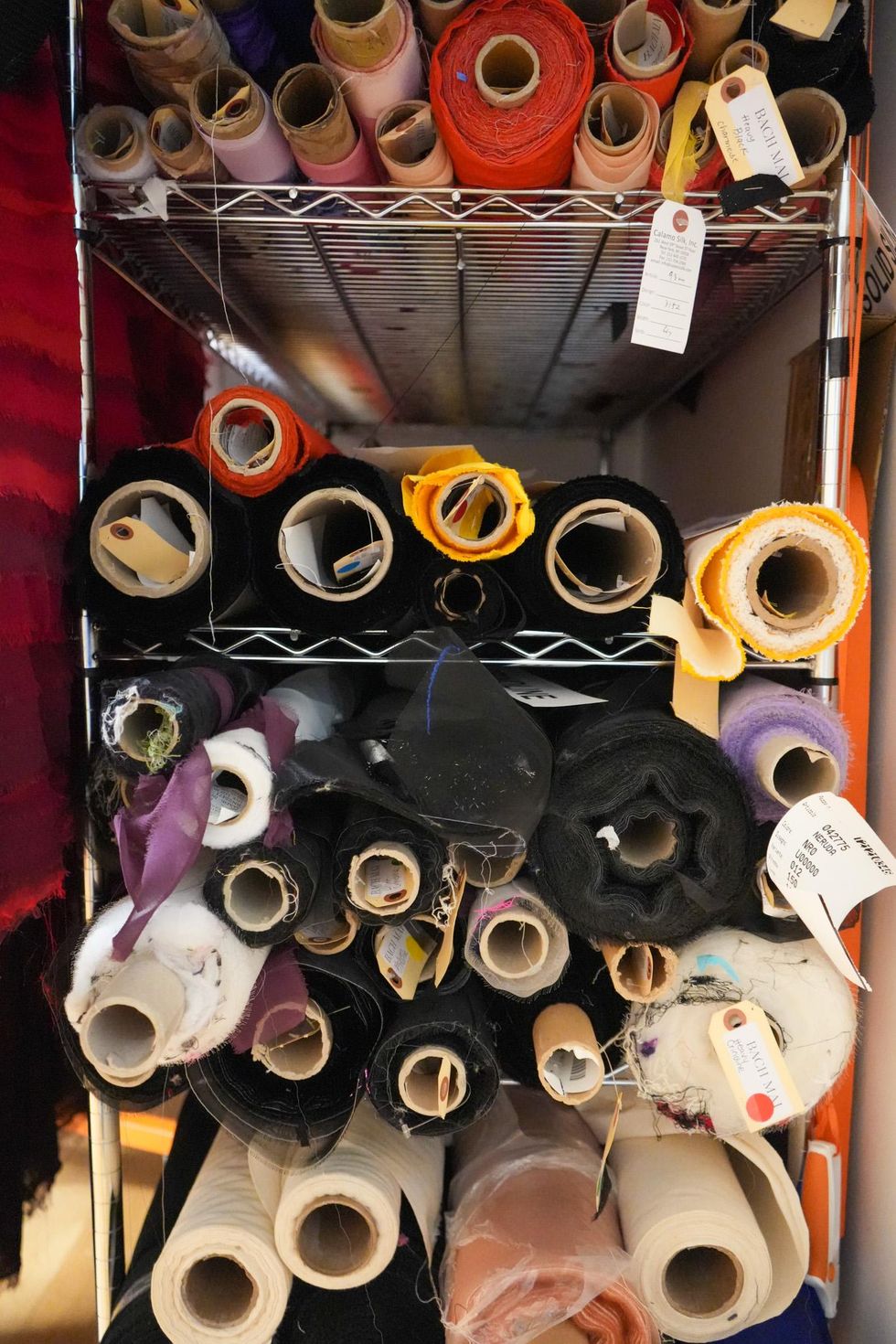
Mai partners with Hurel, one of the oldest, most prestigious fabric houses in France.
“Being from Texas, I mean, we live, eat, and breathe glamour down there.” In high school, he was always designing fabulous frocks for his glamorous friends—and they wore them. Though Mai has always had a “very defined creative universe,” he experimented with his aesthetic through personal style as well as design early on. He wore a uniform in middle and high school, which may have actually bolstered his creativity. “I always found weird ways to customize it. My pants were always super wrinkled (partially out of laziness), but I would twist them in the dryer so that they would be super wrinkled,” he recounts of bending but not breaking the rules. “I wore a lot of things backwards—just different ways to kind of add your [personal] touch.” Mai even admits to doing that “very Texas boy thing”: wearing basketball shorts with cowboy boots.
Now, the fashion savant thinks very little of what he wants to wear when it comes to design. He sits before me in his uniform: a v-neck, pants, and a bomber-esque jacket—the latter is the only thing he designs for himself. He almost exclusively wears all black, and prefers shorts until the weather forces him out of them. “I think about clothes all day,” he explains. “It's like chefs. They go home, they don't make themselves an elaborate four-course meal.” But in the sea of black, Mai's teal hair stands out. Inspired by the distinct style of K-pop (another obsession), he changes the hue to match his collections. (It was recently a deeper blue for the debut of Fall '23).
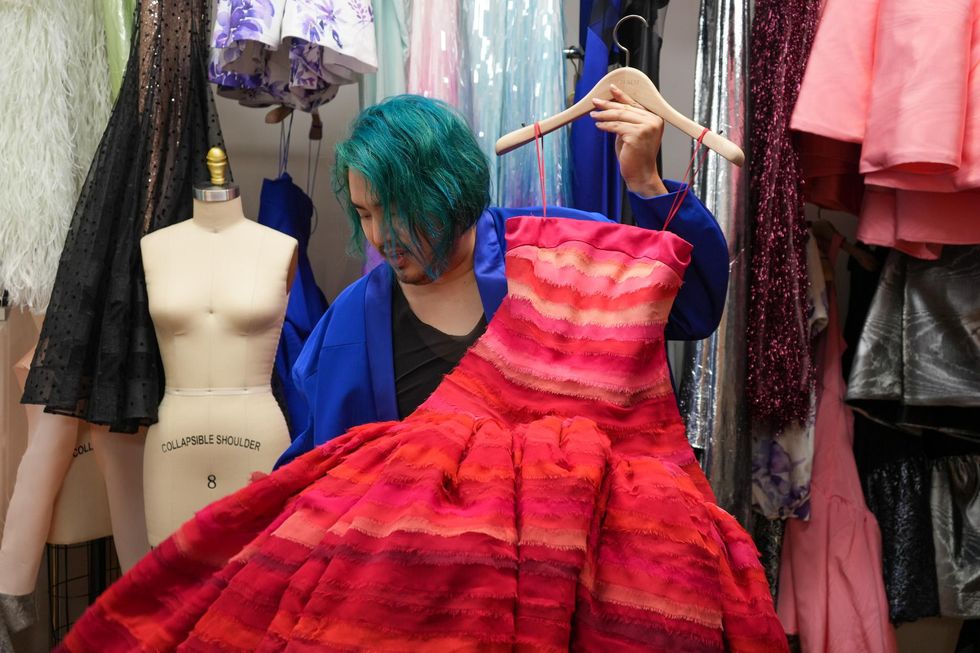
"My father has been so supportive of me and my career. He used to drive me to fabric stores on the weekends and be very patient."
“I love color,” he says.” And before I designed, I used to wear color all the time. The more I [create], the less color I wear.” All of these rules he’ll break for the right event. He wore a shimmering version of the aforementioned jacket to the Frick Collection’s Annual Autumn Dinner. And he’ll dress up, of course, for the ballet.
Despite the confluence between the red carpet and the red curtain, Mai repeatedly assures me his designs are not to be thought of as costumes. But they’re not simply clothing either. They’re fashion. “Fashion exists in this very special space where it's clothing that also has to have a connection to the zeitgeist or some sort of cultural significance or relevance.” But his gowns can’t be costumes because they’re “meant for someone to wear and live their lives in.” Upon a second glance at the extravagant sartorial artistry surrounding us, he adds, “Maybe not always super easily.”

